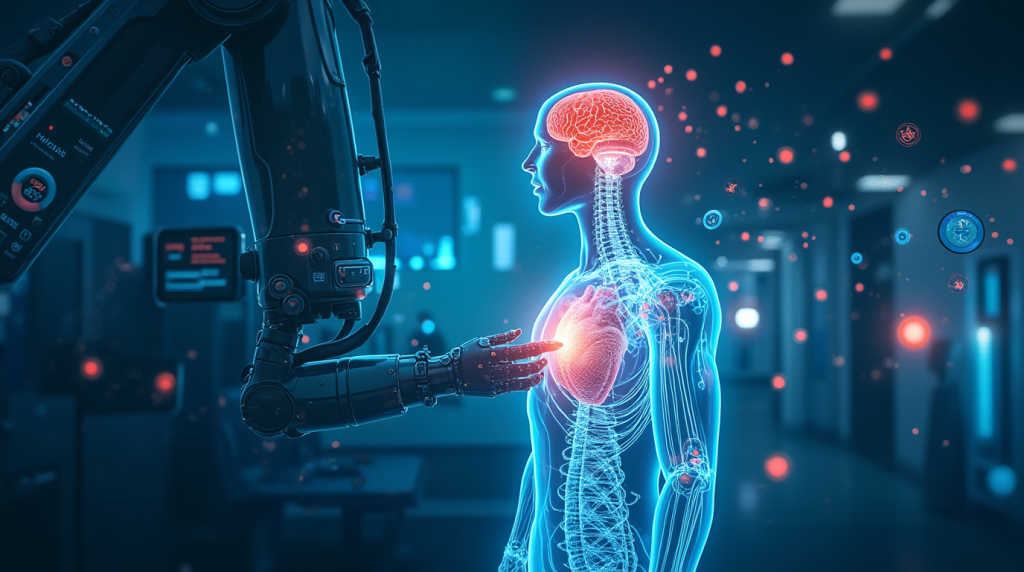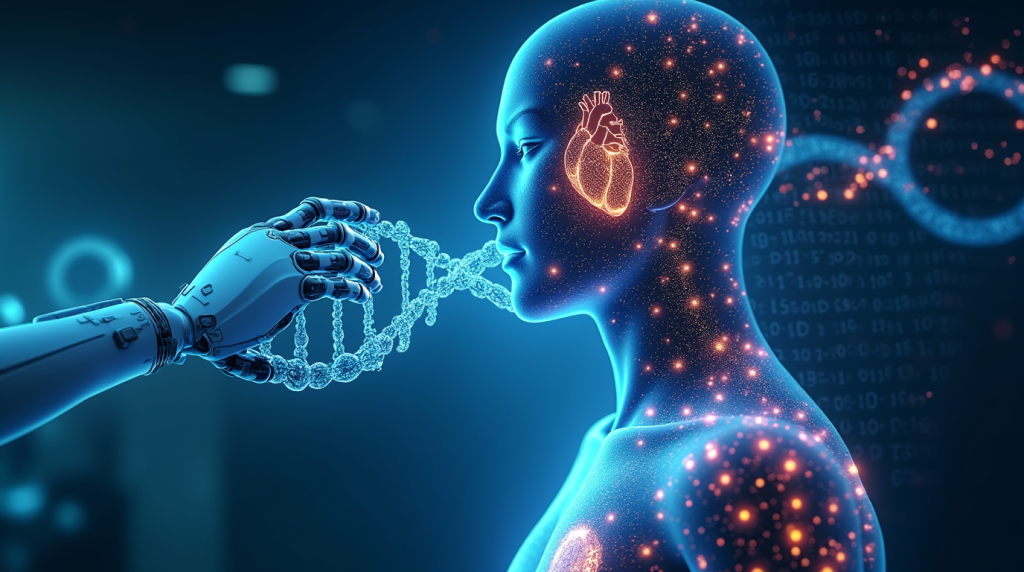The Future of Healthcare is Here
The healthcare industry is undergoing a seismic transformation, driven by groundbreaking technological advancements. By 2025, the global digital health market is projected to reach $657 billion, fueled by AI, telemedicine, and wearable tech (Statista, 2023). These innovations are not just enhancing patient care—they’re redefining it.

From AI-powered diagnostics to nanorobotics, this article explores the top 10 health tech innovations set to revolutionize medicine in 2025. We’ll examine how these technologies work, their real-world applications, and the impact they’ll have on patients and providers alike.
1. AI-Powered Diagnostics: Faster, Smarter, and More Accurate
How AI is Transforming Disease Detection
Artificial Intelligence (AI) is making diagnostics faster and more precise. Machine learning algorithms can now analyze medical images (like X-rays and MRIs) with 95% accuracy, rivaling human radiologists (Nature Medicine, 2024).
Key Applications:
- Early Cancer Detection: AI models identify tumors at stages previously undetectable.
- Predictive Analytics: Forecasts patient deterioration before symptoms appear.
- Automated Pathology: Reduces diagnostic time from days to minutes.
“How AI is Revolutionizing Medical Diagnostics”
For more on AI in healthcare, read our guide on AI-Driven Personalized Medicine.
2. Telemedicine 2.0: Beyond Video Calls
The Next Generation of Virtual Care
Telemedicine is evolving into “Telehealth 2.0,” integrating augmented reality (AR) and IoT devices. The global telemedicine market will hit $185 billion by 2025 (Grand View Research, 2023).
Innovations Include:
- AR-Assisted Surgery: Remote surgeons guide procedures via holograms.
- Wearable Integration: Real-time vitals sync with doctor dashboards.
- Mental Health Chatbots: AI therapists provide 24/7 support.
Statistic:
A McKinsey report found that 60% of patients now prefer telehealth for routine visits.
3. Nanorobotics: The Future of Targeted Therapy
Tiny Robots, Big Impact
Nanorobots—microscopic machines—are being tested for precise drug delivery and cellular repair. Researchers at MIT have developed nanobots that can clear arterial plaque with minimal invasiveness (Science Robotics, 2024).
Potential Uses:
- Cancer Treatment: Direct chemotherapy to tumors, sparing healthy tissue.
- Blood Clot Removal: Prevents strokes without surgery.
- Immune System Boosters: Enhances disease resistance at a cellular level.
4. CRISPR 2.0: Gene Editing with Unprecedented Precision
Beyond DNA Cutting – Gene Writing
CRISPR-Cas9 revolutionized genetics, but CRISPR 2.0 (Prime Editing) allows for “gene writing”—adding, deleting, or altering DNA without breaking strands. This reduces off-target effects by 90% (Harvard University, 2024).
Applications:
- Curing Genetic Disorders: Sickle cell anemia, cystic fibrosis.
- Viral Resistance: Engineered immunity against HIV, flu.
- Age Reversal: Experimental trials on telomere extension.
Explore our deep dive on CRISPR and the Future of Genetic Medicine.
5. Smart Implants: Self-Monitoring and Auto-Correction
Implants That Think for Themselves
Next-gen implants (pacemakers, insulin pumps) now feature:
- AI-Powered Adjustments: Auto-regulate drug dosages.
- Biodegradable Materials: Dissolve after healing.
- Neural Integration: Brain implants restore mobility in paralysis patients.
Statistic:
The FDA approved 45% more smart implants in 2024 vs. 2023 (FDA.gov).
6. 3D Bioprinting: Organs on Demand
Ending Transplant Waitlists
Scientists can now 3D-print functional organs using a patient’s cells. A bioprinted heart valve was successfully transplanted in 2024 (Science Daily).
Current Breakthroughs:
- Skin Grafts for burn victims.
- Liver Patches to repair damage.
- Full-Scale Kidney Trials by 2026.
7. Blockchain for Secure Health Records
Tamper-Proof Medical Data
Blockchain ensures secure, decentralized health records, preventing breaches. Over 40% of U.S. hospitals will adopt it by 2025 (Gartner, 2023).
Benefits:
- Patient-Controlled Access
- Interoperability Between Systems
- Fraud Prevention
8. Neurotechnology: Brain-Computer Interfaces (BCIs)
Merging Mind and Machine
Elon Musk’s Neuralink and others are advancing BCIs to:
- Restore Movement in paralysis.
- Treat Depression via neural stimulation.
- Enhance Cognitive Function.
Statistic:
The BCI market will grow to $6.2 billion by 2028 (MarketsandMarkets, 2024).
9. Digital Twins: Virtual Replicas for Personalized Care
Simulating Your Health Future
A “digital twin” is a virtual model of a patient’s body, predicting how treatments will work. The EU is investing €2 billion in this tech (European Commission, 2024).
Use Cases:
- Drug Response Testing
- Surgical Planning
- Chronic Disease Management
10. AI-Driven Drug Discovery: From Years to Days
Accelerating Medicine Development
AI can now design new drugs in months instead of years. Insilico Medicine used AI to create an anti-fibrotic drug in just 18 months (Nature Biotechnology, 2024).
Impact:
- Lower Costs (up to 70% reduction).
- Rare Disease Breakthroughs.
- Pandemic Preparedness.

Conclusion: The Healthcare Revolution is Now
These 10 innovations are not distant fantasies—they’re being deployed today. From AI diagnostics to nanorobots, the future of healthcare is personalized, predictive, and accessible.
Which innovation excites you most? Stay ahead by exploring our Health Tech Trends Report.
References & Further Reading
- Statista: Digital Health Market Growth
- Nature Medicine: AI in Diagnostics
- Science Robotics: Nanorobotics Breakthroughs
- FDA Smart Implants Approval
The future isn’t coming—it’s already here.
